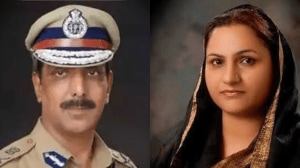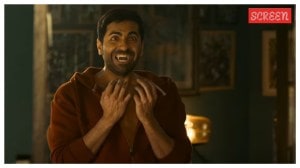Pawar’s predicament
Political careers of Sharad Pawar and his mentor Yashwantrao Chavan have lots in common. Both Maharashtra strongmen played a decisive rol...

Political careers of Sharad Pawar and his mentor Yashwantrao Chavan have lots in common. Both Maharashtra strongmen played a decisive role in the Congress’s national politics. Like Pawar in 1991, Chavan too had left the chief ministership of Maharashtra to move to Delhi as defence minister in 1962. Both came tantalisingly close to becoming India’s prime minister.But there is a story that should put them apart — or so Pawar would like to believe. It is said that former President N. Sanjiva Reddy had invited Chavan to form the government after the fall of the Janata Party government in 1979. But Chavan could not make up his mind. “Give me a day,” he first told the President. Then, he asked for two more days. The opportunity never came back to him though he waited for it till the end of his life. Reddy said later that had Pawar been in Chavan’s place, he would have formed a government and proved his majority.
But will an opportunity come to Pawar again? Or will he end up like his mentor — always thebridesmaid and never the bride?
Political destiny is not determined by individual resolve alone, even though Pawar seems to have made up his mind that it is either Delhi or back to Baramati.
The advent of Sonia Gandhi has heralded the return of family rule and marked the end of the seven-year Glasnost inside the Congress. It has shattered the dream of many Congress leaders of making it to the top.
Pawar, who has risen from the ranks, became a MLA at the age of 27, a chief minister when he was 38, had problems with Indira Gandhi and Rajiv because he did not accept the Family rule. On their part, they did not trust him.The moment she came to power, Indira Gandhi dismissed his Progressive Democratic Front (PDF)-led government in 1980 and imposed President’s Rule in the state. Rajiv Gandhi readmitted him into the party in 1986 but kept him cooling his heels for two years before he was sent back to Maharashtra as chief minister.
In Maharashtra Pawar has been likened to a camel, who first puts his nose in,then his neck before he brings the whole tent down. This is an image that Pawar has not been able to shake off.
And Sonia too views him with wariness, and her appointment of Pratap Rao Bhosale, a Pawar baiter, as the MPCC chief has underscored it. It was no secret that the party leadership wanted to send an anti-Pawar Maratha leader to counter Pawar.
The Congress High Command has made it clear in the last three months that it plans to sideline Pawar. Though he was the natural claimant for the leadership of the Congress Parliamentary Party (CPP), he was made only the leader of the Lok Sabha. The party constitution was formally changed to provide for the position of `chairperson’ of the CPP to be held by Sonia Gandhi. Though the leader of the party in the Lok Sabha, Pawar has been consistently ignored in appointments of heads, or members, of various parliamentary committees. Nor did he speak during a major debate like the one on the nuclear explosions.
Neither Pawar nor Sonia wants to bring therelationship to a breaking point. She realises that the Congress can lose Maharashtra if she acts in haste. That’s why she agreed not to take action against the 10 Congress MLAs who filled blank forms used as nomination papers for the independent candidates following the defeat of her nominee R.D. Pradhan in the recent Rajya Sabha elections. Also, she may not reconstitute the PCC executive in Maharashtra which is packed with Pawar supporters for the time being.
Pawar too has been restrained, though he expressed his unhappiness over the appointment of the new PCC chief. But then Pawar has mellowed over the last one year, and, aware now of the imperatives of national politics, he is not going in for a confrontationist approach. He had taken both P.V. Narasimha Rao and Sitaram Kesri head on and had been humbled each time.
Pawar has three options as routes to the supreme ambition of any Indian politician. And all the three are tough and look remote. One, to try and take over the party. For that he has to waitfor Sonia Gandhi to fail. The Assembly elections in Madhya Pradesh, Rajasthan and Delhi in November are important to both for that reason.
The second option is to split the Congress and support the BJP Government. This is not possible at present, as 50 Congress MPs are not prepared to leave the party. The BJP would also have to promise him not just deputy prime ministership but also reins of Maharashtra, which may spell the end of its alliance with the Shiv Sena.
The third option is to become a national player via the regional route, to float a regional party and try and become the first among equals in a United Front kind of a situation. This too is not so easy, given the fact that the Shiv Sena already fills the space of a regional party in Maharashtra.So where does it leave Sharad Pawar?
His best bet, and perhaps the only one, is to bide his time and see how the situation develops in the months to come. However, his position is different from that of Y.B. Chavan because politics has undergone achange.
Politics is no longer a battle between good and bad but is the art of the possible. Other regional players — be it Chandrababu Naidu, Murasoli Maran, Jayalalitha or even Mulayam Singh or Laloo Yadav — may be more comfortable with him than with Sonia. She may threaten the base of the two Yadavs in UP and Bihar, not Pawar. That’s what should give him hope.
As the fight between Sonia and Pawar goes on, two governments survive. Pawar could have formed a non-BJP Government at the Centre in March 1998, and may be able to do so even today if Sonia allows him.
The other government which may come to thank him is the one in Maharashtra, which is teetering on the brink. Pawar was working on breaking the Shiv Sena and given his connections within the Sena, he was all set to swing it, when Bhosale was installed. Now he may have second thoughts as the credit will go to someone else.
Sonia may continue to hate or sideline Pawar. But the fact is that she cannot afford to ignore him. Like the Marathawarriors, he too believes in guerrilla tactics. Pawar may come back to fight her. Though not directly.
A career at crossroads
1967: Becomes MLA from Baramati
1972: Included in the government of V.P. Naik in Maharashtra
1975: Becomes agriculture minister in Maharashtra
1978: Breaks away from the Congress and becomes the Chief Minister of Maharashtra as the head of a nine-party Peoples’ Democratic Front government1980: Indira Gandhi dismisses his government. He is re-elected in the
Assembly elections the same year and becomes the leader of the Opposition as the head of the 52-member Congress(S)
1986: Rajiv Gandhi readmits him into the Congress at Aurangabad
1988: Becomes Chief Minister of Maharashtra again
1990: In the Assembly elections, the Congress wins 141 seats out of the total 288 seats. Pawar forms a government with the help of Independents
1991: Emerges as a candidate for prime ministership after Rajiv Gandhi’s death but later withdraws in favour of Narasimha Rao
June 1991:Resigns as Chief Minister of Maharashtra and joins the Centre as defence minister
March 1993: Sent back by Narasimha Rao to head the State government.
1998: Elected leader of the Congress party in the Lok Sabha



- 01
- 02
- 03
- 04
- 05




























